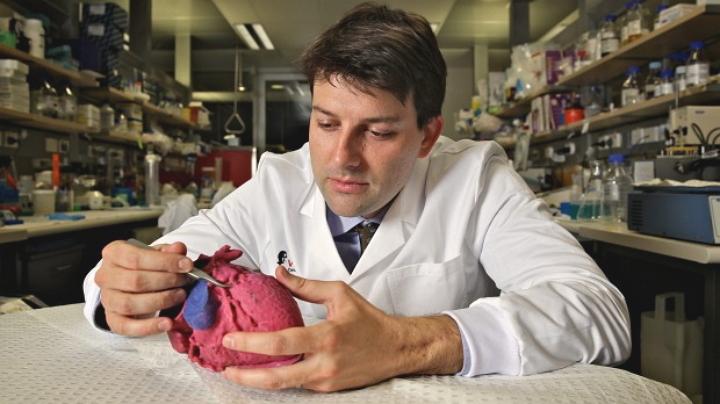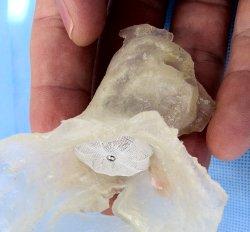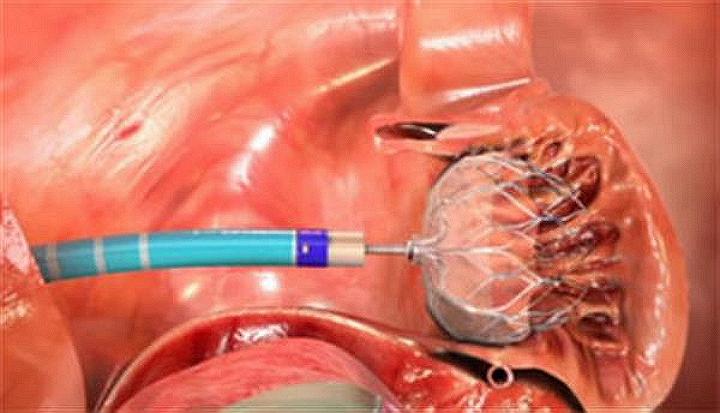 In yet another application of 3D printing to medical planning, Australian physicians are now using the technology to build exact replicas of a patient’s cardiac anatomy when planning for what are called left atrial appendage (LAA) closures.
In yet another application of 3D printing to medical planning, Australian physicians are now using the technology to build exact replicas of a patient’s cardiac anatomy when planning for what are called left atrial appendage (LAA) closures.
Dr. James Otton of the Victor Chang Cardiac Research Institute in Sydney, Australia, says the procedures are part of the process of implanting a device called the Watchman, from Boston Scientific, which was approved by the US Food and Drug Administration in March of this year. The implantation is performed under fluoroscopy and transesophageal echocardiography (TEE), and multidetector computed tomography (CT) helps provide a 3D image of the heart.
“The issue is that the structure of the left atrial appendage is very complex, and even if you have a great-quality data set, it’s very difficult to know where the device will fit within the left atrial appendage. The sizing is not straightforward. Within the orifice of the left atrial appendage, it can be hard to decide exactly where the device should go,” Dr. Otton says.
Now the Sydney researchers prepare 3D printed, life-size replicas of a patient’s heart to help them decode situations where “the anatomy is complex and the interaction between the device and the appendage is difficult to quantify, even using advanced imaging methods.”
This latest application of 3D modeling and printing relates to the experience of a 74-year-old man with a history of what’s known as paroxysmal atrial fibrillation.
Using data taken from a CT scan, the research team printed a 3D model from a rubber-like material to simulate the atrial mechanical properties of the left atrium. The team then placed the Watchman devices into the 3D model, re-imaging the placement with another CT scan. Once the three devices were placed within the 3D model, the team was able to analyze the precise anatomic deformation for each device, and they say this identified the areas and extent of how the Watchman device met up with the flexible atrial model.
What the team found was that, based on the previous method of selecting a size for the device, a smaller version would have been selected. But when the data from CT scan of the 3D model was reviewed, another version of the device was chosen and deployed.
According to Dr. Otton, the 3D printing of the patient’s left atrium was done withing 30 minutes of the CT scan, and it was done relatively inexpensively; the material costs of the 3D print range from just $100 to $200.
“I don’t want to overstate the utility of [3D printing], because this is really just proof of concept, showing that it can be done,” Dr. Otton told Heartwire. “I think 3D printing will be used more—even in our own work it’s been used in other procedures—and I think it will be useful in a subset of complex procedures. And it’ll definitely be useful in education and planning, but I wouldn’t go so far as to say it’ll be routinely done. I think we’ll have to wait a year or two to see how it goes.”
What do you think of this latest use of 3D printing and scanning technology in cardiac treatments? Let us know in the 3D Printed Watchman Method forum thread on 3DPB.com.
Subscribe to Our Email Newsletter
Stay up-to-date on all the latest news from the 3D printing industry and receive information and offers from third party vendors.
You May Also Like
Gorilla Sports GE’s First 3D Printed Titanium Cast
How do you help a gorilla with a broken arm? Sounds like the start of a bad joke a zookeeper might tell, but it’s an actual dilemma recently faced by...
Nylon 3D Printed Parts Made More Functional with Coatings & Colors
Parts 3D printed from polyamide (PA, Nylon) 12 using powder bed fusion (PBF) are a mainstay in the additive manufacturing (AM) industry. While post-finishing processes have improved the porosity of...
$25M to Back Sintavia’s Largest Expansion of Metal 3D Printing Capacity Since 2019
Sintavia, the digital manufacturing company specializing in mission-critical parts for strategic sectors, announced a $25 million investment to increase its production capacity, the largest expansion to its operations since 2019....
Velo3D Initiates Public Offering in a Bid to Strengthen Financial Foundations and Drive Future Growth
Velo3D (NYSE: VLD) has been among a number of publicly traded 3D printing firms that have attempted to weather the current macroeconomic climate. After posting a challenging financial report for 2023,...

































